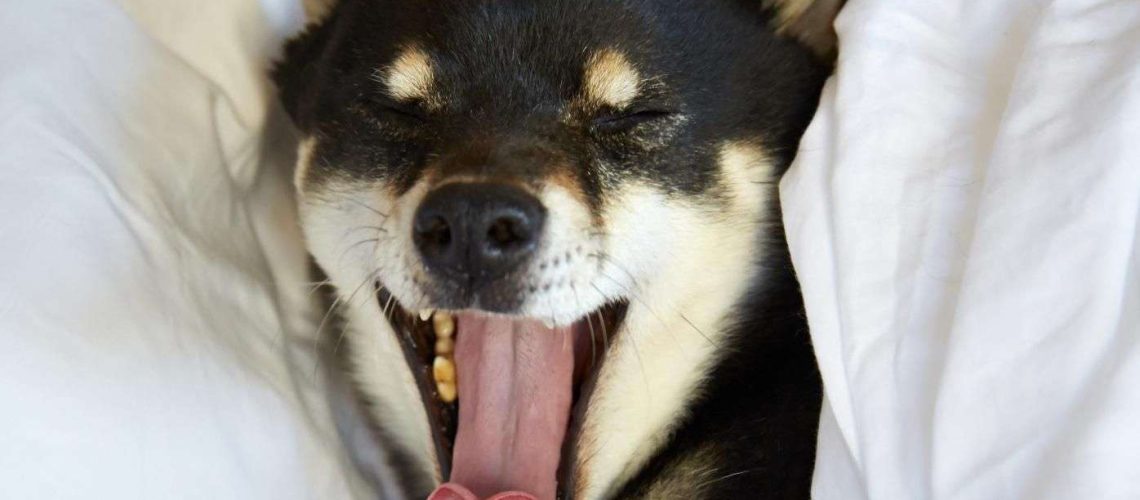Key Takeaways:
- Dogs communicate through a variety of signals and gestures to convey their intentions and emotions.
- Appeasement gestures are used by dogs to signal submission or to defuse potential conflicts.
- Common appeasement gestures include lowering the head, avoiding eye contact, licking lips, and turning away.
- Understanding dog communication and appeasement gestures can help prevent misunderstandings and promote positive interactions between dogs and humans.
- It is important for dog owners to be able to recognize these signals in order to respond appropriately and ensure the well-being of their pets.
Do you ever wonder what your furry friend is trying to tell you? Dogs have their own unique way of communicating with us, and understanding their signals can deepen the bond between you and your canine companion. By delving into the fascinating world of dog communication and appeasement gestures, you can unlock a whole new level of connection with your four-legged pal. Not only will this knowledge enhance your relationship, but it can also help prevent misunderstandings or conflicts that may arise. So, if you're ready to decode the secret language of dogs and become a true canine whisperer, let's dive in!
How Dogs Talk to Each Other: Communication Methods Explained
Verbal Communication
Dogs communicate with each other using various methods, and one of them is through verbal communication. They make different sounds such as barks, growls, whines, and howls to convey their feelings and intentions. For example, a deep bark may indicate aggression or a warning, while a high-pitched bark could mean excitement or playfulness. Growls can signify that a dog is feeling threatened or protective. Understanding these vocalizations can help us interpret what dogs are trying to express.
Body Language
Another important way dogs communicate with each other is through body language. They use their posture, facial expressions, and tail movements to convey different messages. For instance, when a dog is relaxed and friendly, they may have a loose body posture, wagging tail, and open mouth with a relaxed tongue. On the other hand, if a dog feels scared or threatened, they may crouch down with their tail tucked between their legs and ears pinned back.
Dogs also use eye contact as a form of communication. A direct stare can be seen as confrontational or dominant behavior in the dog world. It's essential to understand these subtle cues to better understand our furry friends.
Understanding Dog Body Language: Signs of Friendliness and Playfulness
Tail Wagging
When it comes to understanding dog body language, tail wagging plays a significant role. While many people believe that all tail wags indicate happiness or friendliness, it's not always the case. The position and speed of the wag can provide valuable insights into a dog's emotional state.
A fast and wide wag usually indicates excitement and happiness. However, if the tail is held high while wagging stiffly side-to-side or in a circular motion, it could suggest dominance or assertiveness. On the other hand, a low and slow wag may indicate fear or submission. Paying attention to the context and other body language cues can help us accurately interpret a dog's intentions.
Play Bow
Another important body language signal of friendliness and playfulness in dogs is the "play bow." This is when a dog lowers their front end while keeping their rear end up in the air, often accompanied by a wagging tail. It's an invitation to play and shows that the dog is in a relaxed and playful mood. Dogs use this gesture to communicate their intentions and initiate social interactions with other dogs or even humans.
Other signs of playfulness include bouncing movements, exaggerated wagging of the entire body, and "zoomies" (sudden bursts of energy where dogs run around in circles). Understanding these signals can help us engage in safe and enjoyable play sessions with our canine companions.
The Meaning Behind a Wagging Tail: Why Dogs Do It and What It Indicates
Emotional Expression
A wagging tail is one of the most recognizable behaviors in dogs, but it's important to understand that it doesn't always mean happiness. Dogs wag their tails as a form of emotional expression, but different types of wags convey different emotions.
A high and fast wag usually indicates excitement or happiness. You might observe this when you come home after being away for some time, or when your dog sees their favorite toy or treat. On the other hand, a low and slow wag can signal uncertainty, fear, or submission. If your dog encounters something they are unsure about or feels threatened, they may exhibit this type of tail movement.
It's crucial to consider other accompanying body language cues to accurately interpret what your dog is trying to communicate through their tail wagging.
Communication with Humans
Dogs also use tail wagging as a means of communication with humans. They have learned that we pay attention to their tails, so they use this behavior to convey their emotions and intentions. However, it's essential not to rely solely on tail wagging when trying to understand a dog's mood.
When interacting with dogs, pay attention to the overall body language, facial expressions, and vocalizations. This comprehensive understanding will help you interpret the meaning behind a wagging tail more accurately.
Decoding Dog Behavior: The Purpose and Examples of Appeasement Gestures
What are Appeasement Gestures?
Appeasement gestures are behaviors that dogs display to communicate non-threatening intentions and diffuse potential conflicts or tension. These gestures are often seen in social interactions between dogs or between dogs and humans. Dogs use these signals to show submission and avoid confrontation.
Some common examples of appeasement gestures include:
- Licking lips: Dogs may lick their lips when they feel anxious or want to calm themselves down.
- Turning away: A dog may turn their head or body away from another dog or person as a way of saying they mean no harm.
- Play bow: Similar to the play bow mentioned earlier, a dog may perform this gesture to indicate friendliness and an intention to engage in play rather than aggression.
- Yawning: Dogs sometimes yawn when they are feeling stressed or uncomfortable. It can be a way for them to release tension.
Understanding these appeasement gestures can help us create a calm and positive environment for our dogs, promoting healthy interactions and reducing the chances of conflicts.
Why Do Dogs Use Appeasement Gestures?
Dogs have evolved these appeasement gestures as a way of maintaining social harmony within their packs. In the wild, conflicts could lead to injuries or even death, so dogs have developed these behaviors to avoid aggression and maintain peaceful relationships.
When dogs use appeasement gestures, they are essentially saying, "I'm not a threat, please don't harm me." By displaying submissive behaviors, they aim to defuse potentially tense situations and prevent escalation.
As pet owners, it's crucial to recognize and respect these signals from our dogs. Encouraging positive interactions and providing a safe space for them to express themselves can strengthen the bond between humans and dogs.
Common Ways Dogs Show Submission: Recognizing Appeasement Gestures
Dogs have their own unique way of communicating with each other and with humans. One important aspect of dog communication is the display of submission through appeasement gestures. These gestures are signals that dogs use to show deference and avoid conflict. Understanding these gestures can help pet owners better interpret their dog's behavior and respond appropriately.
Recognizing Appeasement Gestures
There are several common appeasement gestures that dogs may exhibit when they are feeling submissive or trying to diffuse a potentially tense situation. These include:
- Tail tucking: When a dog tucks its tail between its legs, it is a clear sign of submission.
- Avoiding eye contact: Dogs may avoid direct eye contact as a way to show respect and avoid confrontation.
- Rolling over: Rolling onto their backs exposes vulnerable areas, indicating submission.
Cracking the Code: Interpreting and Responding to a Dog's Signals
Interpreting a dog's signals correctly is crucial for effective communication and building a strong bond with your furry friend. Dogs communicate through body language, vocalizations, and facial expressions. By paying close attention to these signals, you can gain insight into what your dog is feeling or trying to convey.
The Language of Dogs
Dogs use various signals to express different emotions or intentions. For example:
- Raised hackles: When a dog's fur stands up along its back, it can indicate fear or aggression.
- Licking lips: Lip licking can be a sign of anxiety or stress in dogs.
- Play bow: A play bow, where a dog lowers its front end while keeping its rear end up, is an invitation to play.
The Importance of Learning Dog Communication and Appeasement Gestures for Pet Owners
As a pet owner, understanding dog communication and appeasement gestures is essential for creating a safe and harmonious environment for your furry companion. By recognizing when your dog is feeling submissive or stressed, you can intervene appropriately to prevent potential conflicts or alleviate their anxiety.
Building Trust and Strengthening the Bond
When you respond to your dog's signals in a positive and understanding manner, it helps build trust between you and your pet. This trust forms the foundation of a strong bond, allowing for better communication and a happier relationship overall.
Taking the Time to Learn
Learning about dog communication takes time and observation. By dedicating yourself to understanding your dog's signals and appeasement gestures, you can become more attuned to their needs and emotions. This knowledge will not only benefit your current pet but also any future dogs you may have.
In conclusion, dogs use various forms of communication and appeasement gestures to express their feelings and avoid conflict. Understanding these signals can help us better communicate with our furry friends and build a stronger bond with them.
What are the 4 major methods of communication that dogs use?
Dogs communicate with each other through various forms such as changing their body posture, physical touch, sounds, and scents. This communication includes vocalizations and body odors, as well as visual and tactile cues.
What is an appeasement kiss from a dog?
If your dog is giving kisses, but also licking their own lips and looking away, it is likely that they are trying to show submission and appease.
What is an appeasement behavior?
Appeasement refers to the act of individuals trying to calm or satisfy others in situations where there is a possibility of conflict. Various actions can serve as appeasement, such as showing emotions, following greeting customs, offering food, and making formal apologies.
What is appeasement behavior in animals?
The term "appeasement behavior" encompasses actions taken by an animal to promote peace and decrease or stop aggressive behavior from other members of its social group. This concept has been discussed and studied by various researchers (Mariti et al., 2014, Fox, 1969, Gattermann, 2006, Feddersen-Petersen, 2008).
What are 5 ways dogs communicate?
Visual communication in dogs involves various physical cues such as mouth shape, head position, licking, sniffing, ear and tail positioning, eye gaze, facial expression, and body posture. On the other hand, auditory communication in dogs includes different vocalizations like barks, growls, howls, whines, whimpers, screams, pants, and sighs.
What do dog gestures mean?
Typical gestures displayed by dogs include raising a paw and touching it to another dog or their owner to communicate a need, wagging their hips to indicate they are fully engaged in play, cocking their head to the side with ears raised to show uncertainty or curiosity, and shaking their head to signal the completion of a certain activity.

















